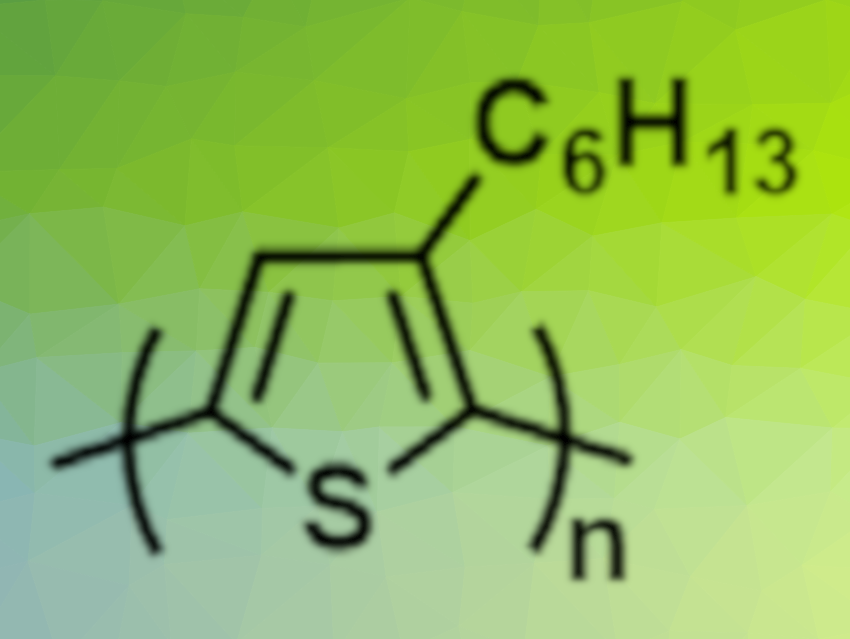Solar cells featuring polythiophenes as donors are promising for commercial application due to their low synthetic complexity and excellent scalability. However, the complex phase behavior of polythiophenes and their blends can make it challenging to realize stable performance under thermal stress. Therefore, it is useful to establish guidelines for materials matching to simultaneously achieve high device performance and thermal stability for polythiophene organic solar cells (OSCs) based on semi-crystalline components.
Xuechen Jiao, University of Science and Technology of China, Hefei, Long Ye, Tianjin University, China, and colleagues have performed a thorough investigation of the behaviors of poly(3-hexylthiophene) (P3HT, pictured) with a range of nonfullerene acceptors (NFAs): the thermodynamic mixing, the thermal properties of the materials, the evolution of nanoscale domain structure, and the device performance. A blend of P3HT with the acceptor ZY-4Cl showed the best performance with over 10 % efficiency and an exceptionally high T80 lifetime of over 6000 hours under continuous thermal annealing. These are among the highest values for P3HT-based solar cells.
Based on the results, the team established two blending guidelines: Blend systems with weak vitrification (i.e., less hindered crystallization) and hypo-miscibility are beneficial to achieving high device performance, and high thermal stability can be achieved by selecting NFAs with diffusion-limited crystallization. The established guidance could be useful for the design and optimization of thermally stable, cheap, and highly efficient OSCs based on poly(3-alkylthiophene)s and similar compounds.
- Thermally stable poly(3‐hexylthiophene): Nonfullerene solar cells with efficiency breaking 10%,
Mengyuan Gao, Yang Liu, Kaihu Xian, Zhongxiang Peng, Kangkang Zhou, Junwei Liu, Saimeng Li, Fei Xie, Wenchao Zhao, Jidong Zhang, Xuechen Jiao, Long Ye,
Aggregate 2022.
https://doi.org/10.1002/agt2.190




